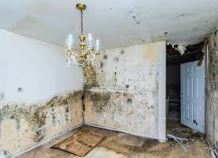When we were selling REOs, the bank clerks objected to reports that their properties had mold in them. Why? Because we weren’t mold experts, so how did we know for sure? Out of that, a new description was created, ‘biological discoloration’, which we shortened to BioDisco.
We still run into the discoloration, and it’s usually a hot topic for buyers – and a big ticket for the mold-remediation companies. But how bad is it? From the U-T:
One must know what kind of mold it is. Mold consultants and injury attorneys often describe some molds as worse than others. Their star is Stachybotrys chartarum, a black mold reported to produce infinitesimal quantities of a toxin. It sounds frightening, but the scientific community long ago debunked the myth that this or any mold was poisonous to breathe. For example, read the National Institute of Health Fact Sheet on Mold, found at www.niehs.nih.gov, or visit the Center for Disease Control site at cdc.gov/mold/faqs.htm. Nevertheless, the mold industry continues to call mold “toxic.”
Always start with a mold test. The Environmental Protection Agency recommends against mold testing. As confirmed by the DPH, there is no standard as to how much of a given airborne mold is “unhealthy.” Furthermore, indoor air sampling tests are extremely vulnerable to recent events in the home. For example, a recent shower, window opening, or carpet cleaning can completely change the test results. So, mold tests mainly unnecessarily frighten the home’s occupants with disembodied meaningless spore counts. There is rarely a legitimate reason to spend money on a mold test.
More tips here:
Link to U-T Article




0 Comments